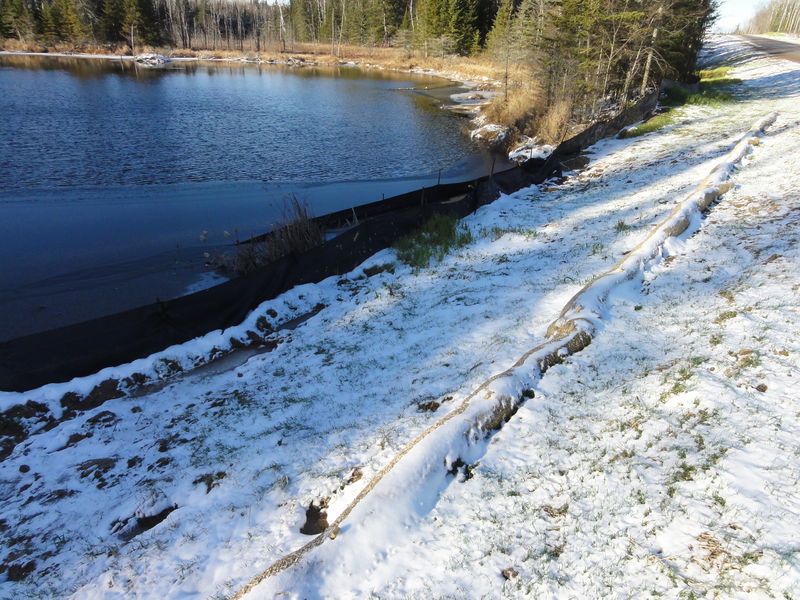In our northern states, the leaves have changed and have already fallen. Construction projects are quickly trying to wrap up grading, landscaping, and other outdoor tasks. But is your project overlooking a big stormwater task during this fall season?
We all know northern winters can be brutally cold, snowy, or mild with little to no snow. Preparing your site to handle the winter will greatly reduce your Best Management Practice (BMP) maintenance and expedite your return to work in the spring. We have several tips and tricks for project owners and supervisors:
- Established vegetation. The best winter BMP is established vegetation. Consider the germination time when preparing your site for the winter. For example, the Minnesota Department of Transportation’s (MnDOT) recommended window for seeding has already passed, but dormant seeding and snow seeding are still great options to promote rapid vegetation growth for the spring without getting equipment stuck in the mud! Look at the 2014 Seeding Manual from MnDOT for more information.
- Seed and crimped straw is a recommended temporary stabilization technique for nearly all scenarios. Confirm the straw is properly crimped into thawed ground before freeze-up conditions.
- a. If winter has snuck up on you, stabilization is still required, but techniques change. Crimping is difficult or impossible after the ground freezes. The Minnesota Pollution Control Agency (MPCA) has some great resources on snow mulching that detail how to stabilize after winter has set in.
- For projects in urban environments, evaluate your ability to move curbside perimeter controls (such as silt fence and filter logs) away from the curb to minimize snowplow damage. Permission from the local government unit (LGU) may be needed to remove or move BMPs, so check with your LGU first.
- Speaking of snow, think about plow routes and locations where snow will be stored throughout your project site (if needed). Confirm perimeter controls will not be damaged as snow piles grow and melt run-off concentrates and potentially overwhelm BMPs.
- If sanding and/or salting operations will occur on your site, consider the downstream cumulative effects to vegetation, soils, and permanent stormwater management features that are not fully constructed or established. Potential upgradient BMPs to divert flows from these areas may require installation before freeze-up.
- Clean your streets before any chance of freezing or snow. Sweepers and vac-sweepers are not able to work during the winter months. Skid-steers can be used to clean sediment from roads in the Winter. Consider where this scraped sediment will be stored. It will be considered a stockpile and need perimeter controls installed.
- Per the MCPA, inlet protections must remain installed throughout the winter. Several cities, counties, and watersheds have their own regulations that require inlet protections to be removed by certain dates, most are November 15th. Check with your LGU and be prepared!
- a. The MPCA does allow the temporary removal of inlet protections that if frozen, could create a public safety concern.
- b. If any inlet protections are removed, or BMPs in general are moved or removed, documentation in the Storm Water Pollution Prevention Plan is required.
- If no ground disturbance is occurring then inspections can be suspended once your site has frozen ground conditions. However, if a warm-up occurs, weekly inspections do need to be started up again.
- a. Additionally, if ground conditions remain frozen, but a day or two of warm weather occurs, an after runoff event inspection is required within 24 hours of the event. Runoff is defined as precipitation or melt water moving on site far enough to discharge from the site either via a perimeter control, or a permanent stormwater system.
Navigating the needs and requirements of your site through the winter is a handful, let alone the National Pollutant Discharge Elimination System (NPDES) permit itself. If you require any assistance planning, preparing, or inspecting, Braun Intertec and our certified inspectors are more than happy to help. You can request the assistance of our talented stormwater specialists by filling out the form to the right.
